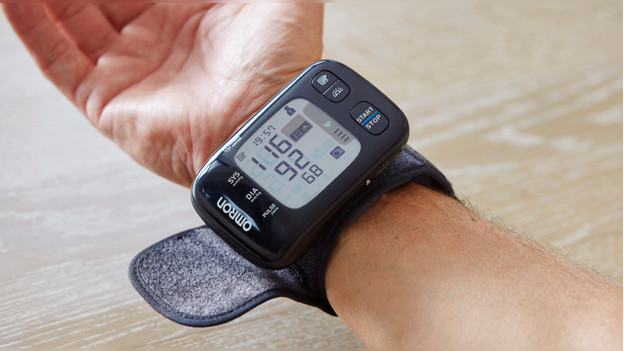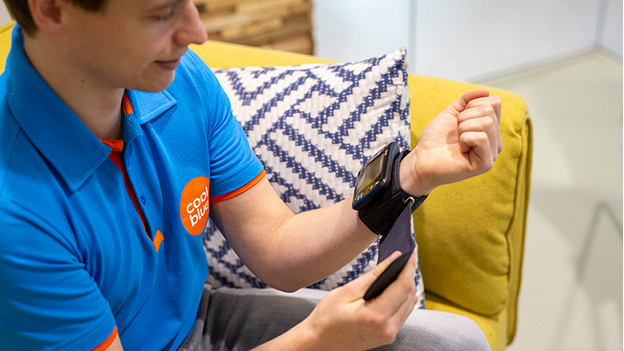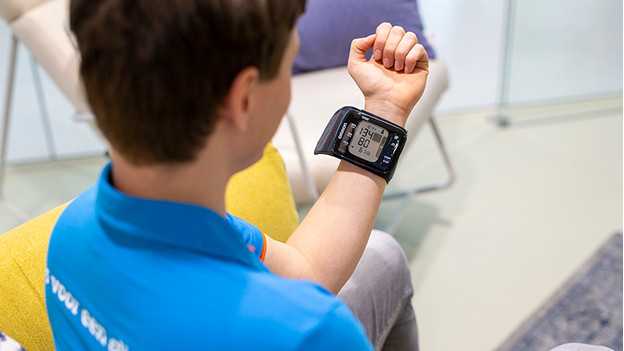
4 tips to get an accurate measurement with a wrist blood pressure monitor
Getting started with your wrist blood pressure monitor

We have listed 4 tips with which you can perform an accurate reading.
- Tip 1. Prepare well for the reading.
- Tip 2. Make sure the cuff is around your arm properly.
- Tip 3. Check your posture and activity.
- Tip 4. Keep your arm still at heart level.
Tip 1: prepare yourself well for a measurement

You need to perform an accurate measurement of your blood pressure under comparable circumstances. The results shouldn't differ much from a measurement performed by a doctor. Make sure you don't do any demanding physical work, smoke, or drink coffee 30 minutes before the measurement. In addition, rest for 5 minutes before the measurement. Keep in mind your blood pressure is usually lower at home. The Heart Foundation reports your blood pressure at home is too high if it's above 135mmHG.
Tip 2: make sure the cuff fits well around your arm

The cuff of the blood pressure monitor needs to be properly attached to your arm for an accurate measurement. You need to attach the cuff around the arm you use the least, unless a doctor says otherwise. So, if you're right-handed, you need to attach the cuff to your left arm. Make sure there are no clothes between the monitor and your skin. This prevents measurement errors. Many blood pressure monitors indicate if the cuff is too loose or too tight. This means the device will notify you if the monitor is attached incorrectly.
Tip 3: mind your posture and activity

It's important you perform the measurement while sitting down with the right posture. Take a seat on a chair with backrest and make sure you sit upright with your back against the rest. Then, place both feet next to each other on the ground. A measurement while you sit with crossed legs could result in incorrect results. In addition, talking during the measurement could affect the reading. So it's sensible not to talk while using a blood pressure monitor.
Tip 4: keep your arm still and at the height of your heart

The position of your arm might even be more important than your body posture. For an accurate reading, the blood pressure cuff needs to be at the height of your heart. So when using a wrist blood pressure monitor, you need to raise your arm. It's possible your wrist moves while you do this. Movement affects the accuracy of the reading, which leads to incorrect results. That's why you should support the arm you use for the measurement by resting your elbow on the armrest of your chair or on a table, for example.


